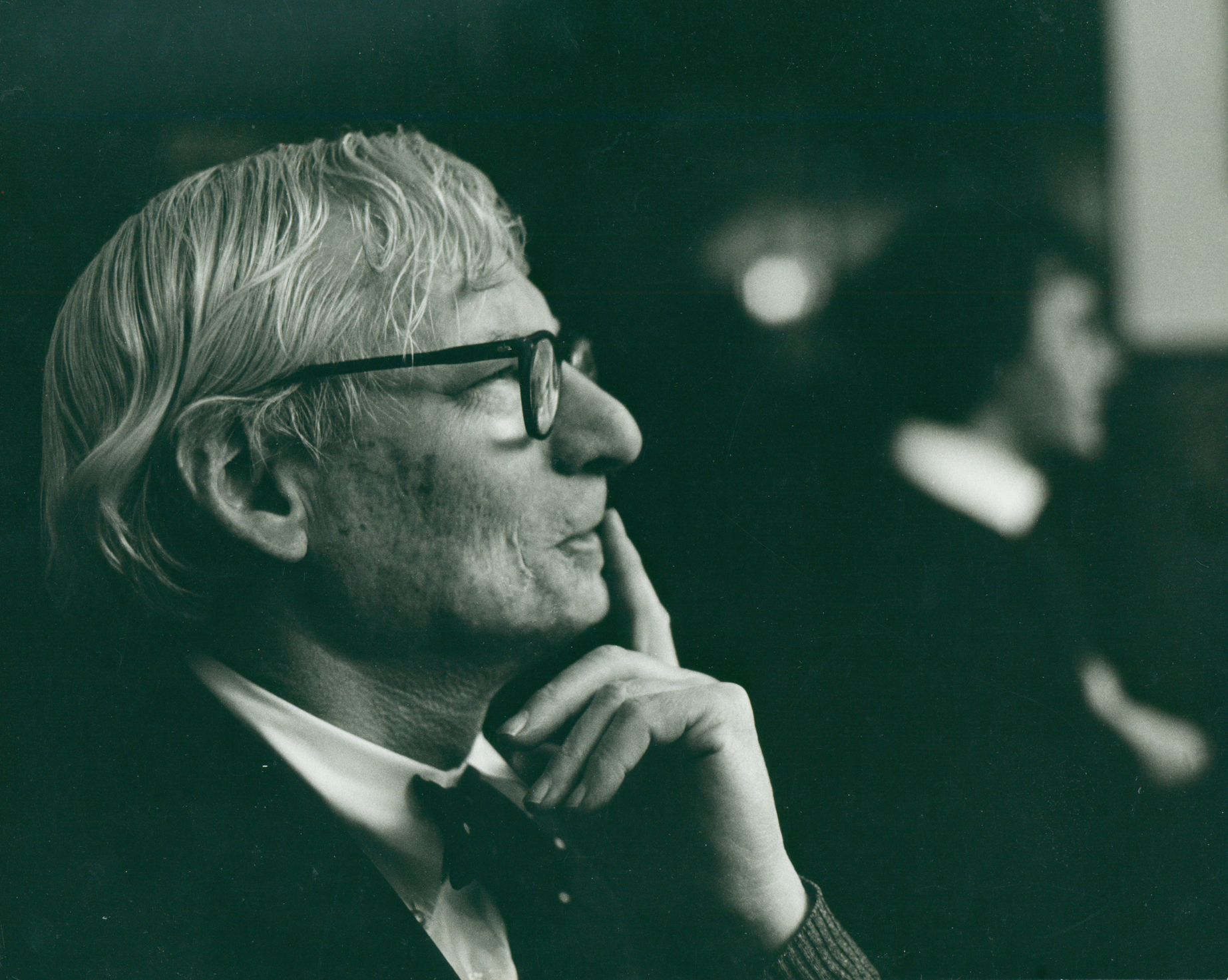One of the most influential architects of the 20th century, Louis Kahn was a complicated man (case in point: he had three separate families who met at his funeral) — but his designs were not. He used familiar materials like concrete and brick and simple shapes to create functional buildings that showed their purpose.
Take a dive into his important body of work at Louis Kahn: The Power of Architecture, now at Bellevue Arts Museum through May 1. The first major retrospective of Kahn’s work in two decades, the exhibition includes personal notebooks, models, drawings, pastels, and other personal effects from the architect, who studied at the University of Pennsylvania in Philadelphia before opening his own firm in 1935.
One of his hallmarks was the use of “served” and “servant” spaces that were distinct from one another — a departure from the prevailing architecture of the time in which one space housed all parts of a building. He also loved natural light, circular windows, space frames, and science. “He was intrigued by how biology was the basis of life and was intrigued by how it could be the basis of architecture,” says Lotte Goede, a docent at Bellevue Arts Museum. “He gave modernist architecture a new direction to go in.”
Although he’s best known for public buildings like the Yale University Art Gallery, the Kimbell Art Museum in Fort Worth, the Salk Institute in California, and the National Assembly in Bangladesh, Kahn also designed a handful of houses. In the exhibit, you can see his drawings for the modular, prefabricated Parasol House, which was never built. Later designs took on more regional inspiration, and he saw the house as analogous to a city, with bedrooms as residential districts, kitchens as industrial areas, and corridors as streets.
Writer and editor Nina Fisher grew up in a Kahn-designed house in Hatboro, Pennsylvania. Design and construction took seven years, with the result being a house that offered light, warmth, versatility, and security. “After I moved out, I remember thinking, ‘How will I ever have a house that matches the standards of my parents’ house?’ With time, I realized I probably wouldn’t, but that I could take the lessons of my childhood home with me: a house that honors light, encouraging it to enter, playing with it, and changing mood as the character of the light shifts,” Fisher wrote in an article for Curbed Philadelphia. “Kahn said to my mother once, as she interviewed him before a group of people toured our home, ‘Without light you don’t have space or, you might say, a room, and so a room is made of a character of light.’”
Noted architects I.M. Pei, Renzo Piano, Frank Gehry, and untold others were deeply influenced by Kahn — head to Bellevue Arts Museum this weekend to find out why.
And if you’re looking for another related activity this weekend, the 2016 Seattle Modern Home Tour is happening this Saturday, April 30.
